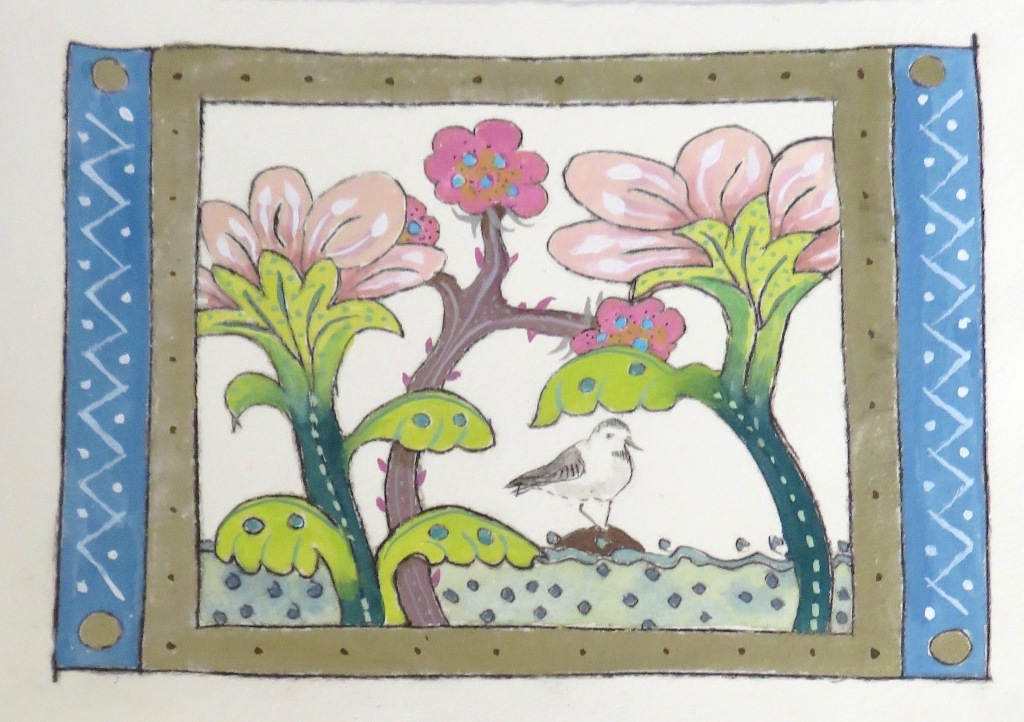We set up our new exhibition at the Oxford Gallery, on the 6th October. As you can see we have very different approaches to printmaking.
OPEN HOUSE PRINTMAKERS : NEW WORK
Kathy Anderson, Jo Ernsten, Casey Macaulay, Ruth Stanton-Mcleod, Kris Waldin, Tessa Warburton & Celia Wilson
7-24 October 2021






Here is my submission.
For this set of hand coloured prints I concentrated on the flora and fauna of the River Eyre/Waiaraki to show the displacement of bird life by introduced by exotic plant life. The plants take on an imaginary shape, though based on actual plants. These prints were influenced by medieval illustrations; I felt our present day understanding of nature is in some respect no different to their ideas of what exotic animals might look like. My work always comes out ‘pretty’ no matter how hard I try to make it the opposite! I really enjoyed painting these prints.
Ed 2/5 EV “Herbarium Exotica V” Celia Wilson
A Wrybill is the bird shown in this print.




